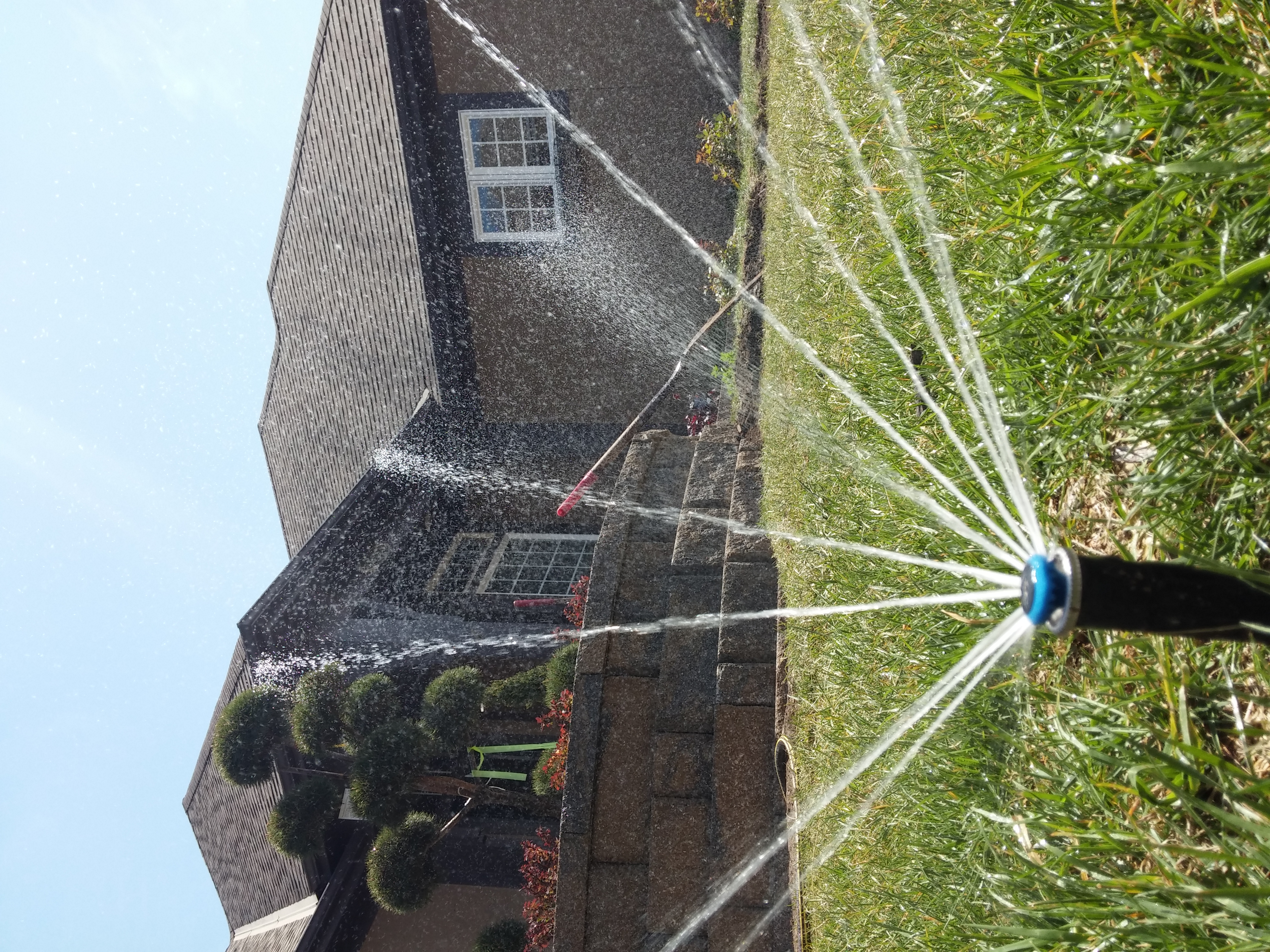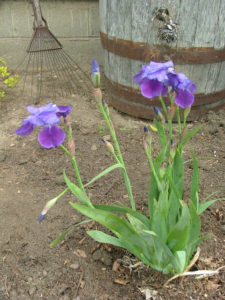
Watering Lawns in the Summer Heat
The Importance of Maintaining a Healthy Lawn
A thick, green lawn is visually pleasing and can boost your home’s curb appeal. Maintaining a healthy lawn goes beyond aesthetics, however. A well-kept lawn can provide several benefits for both your family and the environment.
For example, it helps to reduce soil erosion and filters pollutants from rainwater before it seeps into groundwater reservoirs. Additionally, lawns can cool the air around your home, reducing energy costs.
The Impact of Summer Heat on Lawns
The Midwest summer heat can devastate lawns if they are not properly maintained. When temperatures rise above 80°F, grass begins to lose its ability to photosynthesize effectively.
This excessive heat causes the blades of grass to become brittle and turn brown as they struggle to maintain their moisture levels. Beyond this increased brittleness, summer heat increases the risk of pests and lawn disease.
Insects like chinch bugs thrive in hot weather and can quickly decimate an unprepared lawn. Other Insects like fleas, ticks, and grubs (see picture) can cause havoc in poorly maintained lawns. In addition, overwatering can cause diseases to spread. Fungal diseases such as dollar spot or brown patch similarly spread more easily in warm weather when too much moisture is retained in the soil.
The Role of Watering in Keeping Lawns Healthy
Watering is essential to maintain a healthy lawn during the summer heat as it helps keep grass hydrated while combating disease and pest infestations that thrive under hot conditions. However, overwatering or watering at improper times could cause severe damage, such as fungal growth or wasting water through evaporation, without providing any real benefit. Understanding how much water your lawn needs may vary based on various factors, including temperature, humidity level, soil type, and grass species used on your property.
Effective watering practices will help you achieve a healthier green lawn while promoting beneficial bacteria and fungi in the soil. With proper attention to watering, your lawn will continue to look lush and green even as the summer temperatures rise.
The Science Behind Watering Lawns in Summer Heat
The Basics of Lawn Watering
Water is essential for the growth and overall health of your lawn. First, however, it is crucial to understand the amount of water needed and how often the lawn should be watered.
Generally, lawns need about an inch of water per week, which can come from either rain or watering. However, it is important to note that this amount may vary depending on grass type and soil in your lawn. Additionally, lawns on slopes may need more frequent but shorter watering periods to prevent runoff.
Determining the Right Amount and Frequency of Watering
To determine the right amount and frequency of watering for your lawn during the summer heat, you can do a few things. The first is to check the soil moisture level by sticking a screwdriver or similar object into the ground about six inches deep. It is time to water if it comes out dry or with only a little moisture on it.
Visible signs that your lawn needs more water include wilted or discolored grass blades, footprints remaining visible in the grass long after being made, and soil that feels dry when touched.
Another method is considering weather conditions such as temperature and rainfall when deciding how often to water your lawn. Lawns should be watered deeply but infrequently to encourage profound root growth.
Ultimately, finding the right amount and frequency of watering for your lawn will depend on several factors unique to your lawn’s environment. By considering these factors and monitoring the conditions of your lawn, you can help ensure a healthy and thriving lawn all summer long. On the other hand, signs that you may be overwatering include standing water on the ground’s surface after irrigation and increasing pest activity, such as mosquitoes, since they like standing water.
Best Practices for Watering Lawns in Summer Heat
Timing is Key: When to Water Your Lawn
Watering your lawn during summer heat can be a tricky task. The best time to water your lawn is between 5 am and 9 am.
In the morning, temperatures are cooler, and there is less wind, which means that water will have a better chance of soaking into the soil rather than evaporating. Watering early in the morning ensures your lawn has enough moisture to withstand the hot afternoon sun.
If you can’t water in the morning, your next best bet is watering in the late afternoon or early evening before sunset. However, ensure you don’t water too late, as overnight wet grass can attract pests and diseases.
Techniques for Effective Lawn Watering
Watering techniques are critical for keeping your lawn healthy during the summer heat. Unfortunately, one mistake many homeowners make is watering too quickly and not allowing the water to penetrate deep into the roots.
Instead, use a slow and deep watering technique that allows water to soak deep into the soil. On average, water your lawn one inch per week during summer heat (although some lawns may require more). Slow deep watering will encourage the lawn’s root system to drop, allowing the lawn to stay green longer throughout the summer heat.
An empty tuna can be placed near where you’re watering – once it’s full with an inch of water, turn off the sprinklers. You should also ensure that there isn’t any runoff from watering as these wastes both time and resources; adjust sprinkler heads so they don’t overshoot onto sidewalks or driveways.
Avoid watering your lawn during the hottest parts of the day, as more water might evaporate before it can soak into the soil. Avoid common mistakes by following these best practices when caring for your lawn during the summer heat, and you’ll ensure that your grass stays green and healthy all season long.
Advanced Tips for Watering Lawns in Summer Heat
Using smart irrigation systems
A smart irrigation system is one of the most effective ways to ensure your lawn stays healthy during the summer heat. These systems use weather sensors and moisture detectors to monitor when to water and how much it needs, eliminating guesswork. They can also be programmed to water at certain times of the day and for specific durations, ensuring that your lawn is not under or overwatered.
Additionally, some smart irrigation systems can be controlled remotely using a smartphone app, which means you can adjust watering schedules and settings even when you are away from home. While they may cost more than traditional irrigation systems, smart irrigation systems will conserve water, reduce lawn maintenance costs, and save you money in the long run.
Choosing the right type of grass
Choosing the right type of grass that is well-suited for your climate is important if you want a healthy lawn during summertime. Tall turf fescue has been a Kansas City favorite since it can handle the temperature extremes that the Midwest brings.
Conclusion
Maintaining a healthy lawn during summertime requires careful consideration of several factors, such as grass variety, soil type, watering practices, and conservation efforts. Following best practices such as watering slowly and deeply, using smart irrigation systems, and avoiding watering at peak temperatures can help keep your lawn lush without wasting water. Slow deep watering will encourage your tall turf fescue lawn’s root system to drop, allowing the lawn to stay green longer. These simple lawn tips will enable you to enjoy a beautiful thick green lawn throughout the summer.





















